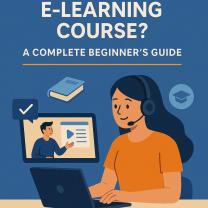How can writing be taught to students?
Teaching writing to students is a multifaceted process that involves various strategies and approaches to help students develop their writing skills. Here are some effective methods for teaching writing to students:
Modeling:
- Demonstrate effective writing by providing examples and models of well-written texts. This can help students understand the structure, style, and organization of different types of writing.
Prewriting:
- Encourage students to engage in prewriting activities like brainstorming, outlining, and researching before they start writing. Prewriting helps organize thoughts and ideas.
Writing Prompts:
- Use writing prompts to stimulate creativity and critical thinking. Prompts can be based on various topics, themes, or genres, and they can serve as starting points for student writing.
Genre Exploration:
- Introduce students to different types of writing genres, such as narrative, expository, persuasive, and descriptive writing. Teach the conventions and characteristics of each genre.
Process Writing:
- Emphasize the writing process, which typically includes drafting, revising, editing, and proofreading. Teach students to revise and improve their work systematically.
Peer Review and Feedback:
- Encourage peer review sessions where students provide constructive feedback to one another. Peer review helps students refine their writing and learn from their peers.
Grammar and Mechanics:
- Teach grammar and mechanics within the context of writing. Address common errors and provide grammar lessons as needed to improve writing quality.
Writing Workshops:
- Conduct writing workshops where students share their work with the class and receive feedback from both peers and the teacher. Workshops promote collaboration and self-expression.
Individual Conferencing:
- Schedule one-on-one conferences with students to discuss their writing progress, address concerns, and provide personalized feedback and guidance.
Writing Prompts with Real-Life Relevance:
- Assign writing tasks that have real-life relevance and purpose. For example, students can write letters, proposals, or articles related to current events or personal experiences.
Use Technology:
- Incorporate technology, such as word processing software and online writing tools, to make the writing process more engaging and accessible.
Reading-Writing Connection:
- Highlight the connection between reading and writing. Encourage students to read widely as it can enhance their vocabulary and writing skills.
Cultural and Multilingual Considerations:
- Be sensitive to the cultural and linguistic backgrounds of students. Embrace diverse perspectives and languages in the classroom.
Assessment and Rubrics:
- Develop clear assessment criteria and rubrics to evaluate students' writing. Provide constructive feedback to help them understand areas for improvement.
Encourage Revision:
- Encourage students to see writing as a process of revision and improvement. Emphasize that first drafts are rarely perfect and that revision is essential.
Foster a Growth Mindset:
- Promote a growth mindset by reinforcing the idea that writing skills can be developed and improved over time through effort and practice.
Remember that effective writing instruction involves a balance between teaching writing conventions and fostering creativity and self-expression. It's important to create a supportive and encouraging environment where students feel comfortable taking risks with their writing and are motivated to improve their skills. Adapt your teaching methods to the needs and abilities of your students, and provide ongoing support and encouragement throughout their writing journey.
Teaching Writing to Students: Strategies, Methods, and Approaches
Teaching writing to students is a complex task, but it is also a rewarding one. Writing is a fundamental skill that students will need to succeed in school and in life.
There are a variety of strategies, methods, and approaches that teachers can use to teach writing to students. Some effective approaches include:
- Making writing relevant to students' lives. Students are more likely to be engaged in writing if they are writing about topics that they are interested in. Teachers can help students to find topics that are relevant to their lives by asking them to write about their experiences, their thoughts and feelings, and their dreams for the future.
- Providing students with opportunities to write for a variety of purposes. Students need to learn how to write for different purposes, such as to inform, to persuade, and to entertain. Teachers can provide students with opportunities to write for a variety of purposes by assigning them different types of writing assignments, such as essays, stories, poems, and letters.
- Giving students feedback on their writing. It is important for students to receive feedback on their writing so that they can learn from their mistakes and improve their skills. Teachers can provide feedback on students' writing in a variety of ways, such as writing comments on their papers, holding individual conferences with them, and leading class discussions about their writing.
- Creating a positive and supportive writing environment. Students need to feel comfortable taking risks and experimenting with their writing. Teachers can create a positive and supportive writing environment by encouraging students to share their work with each other, providing them with opportunities to revise and edit their work, and celebrating their successes.
Empowering Student Writers: Effective Approaches to Teaching Writing
There are a number of effective approaches that teachers can use to empower student writers. Some of these approaches include:
- Teaching students about the writing process. The writing process is a recursive process that involves planning, drafting, revising, and editing. By teaching students about the writing process, teachers can help them to become more independent and self-sufficient writers.
- Providing students with writing models. Students can learn a lot by studying the writing of others. Teachers can provide students with writing models from a variety of sources, such as published works of literature, student essays, and articles from newspapers and magazines.
- Teaching students writing strategies. There are a number of writing strategies that students can use to improve their writing, such as using vivid language, developing strong characters, and organizing their thoughts in a logical way. Teachers can teach students these strategies by providing them with explicit instruction and opportunities to practice using them.
- Giving students choices in their writing. Students are more likely to be engaged in writing if they have a choice in what they write about and how they write it. Teachers can give students choices in their writing by allowing them to choose their own topics and by providing them with different writing formats to choose from, such as essays, stories, and poems.
The Art of Composition: Teaching Writing Skills to Students
Teaching writing skills to students is an art. It requires teachers to be patient, understanding, and supportive. It also requires teachers to be knowledgeable about the writing process and to have a variety of teaching strategies at their disposal.
By using the effective approaches described above, teachers can help students to become empowered writers who are able to communicate their thoughts and ideas clearly and effectively.
Here are some additional tips for teaching writing to students:
- Make writing a regular part of your classroom routine. Set aside time each day for students to write. This could be for a short period of time, such as 10 minutes, or for a longer period of time, such as 30 minutes.
- Provide students with a variety of writing prompts and activities. This will help to keep students engaged and interested in writing. You can find writing prompts and activities online, in books, and in teacher magazines.
- Differentiate your instruction to meet the needs of all learners. Some students may need more support than others when it comes to writing. Be sure to provide students with the support they need to succeed.
- Celebrate students' writing successes. This will help students to feel confident in their writing abilities. You can celebrate students' writing successes by sharing their work with the class, posting it on the wall, or publishing it in a class newsletter or magazine.
Teaching writing to students can be a challenging but rewarding experience. By following the tips above, you can help students to become effective writers who are able to communicate their thoughts and ideas clearly and effectively.













